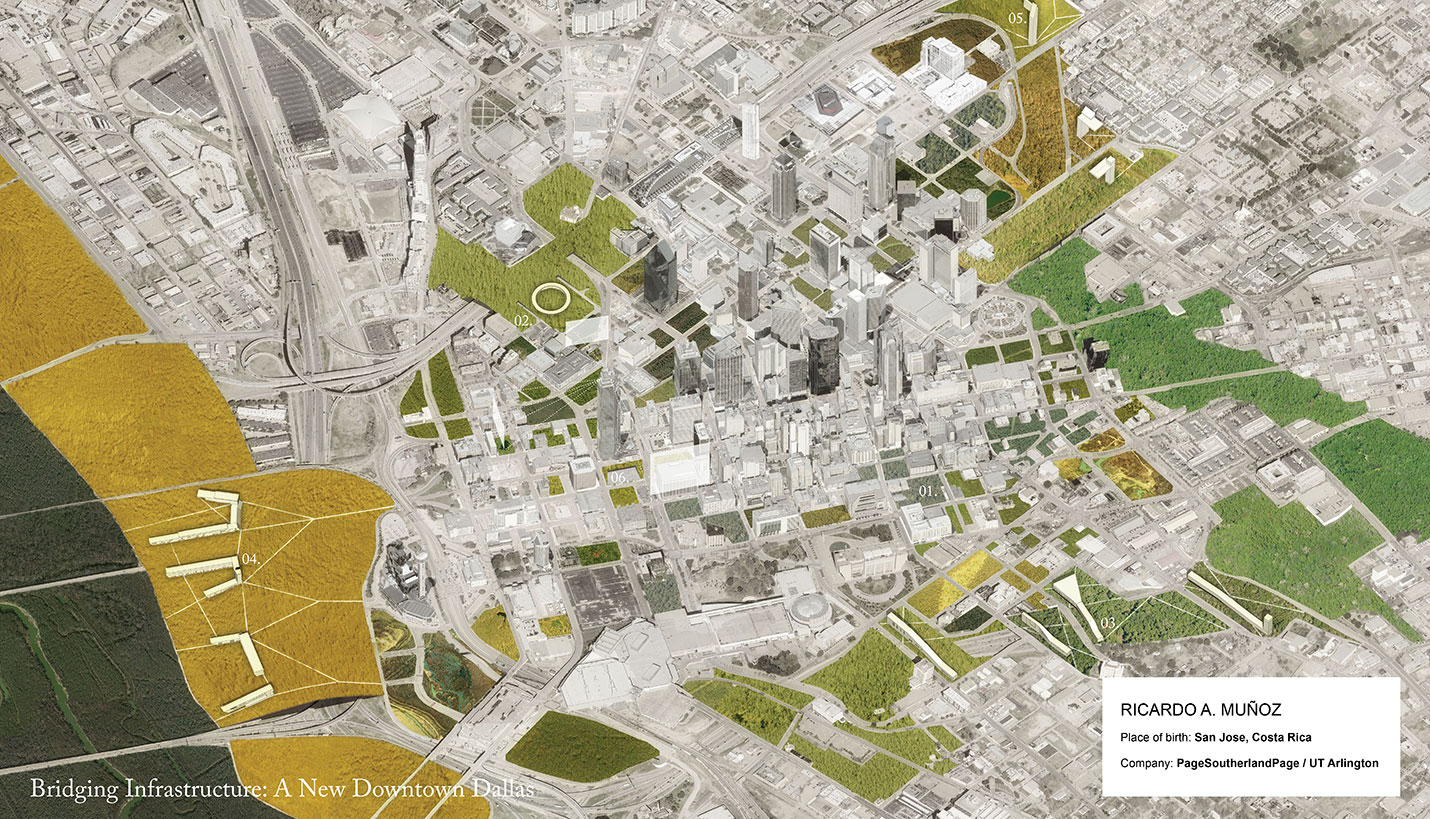Page Designer Reimagines Dallas Landscape
Can you imagine downtown Dallas as a lush green zone? That’s precisely what Ricardo Munoz, Associate AIA, has done with his theoretical project, “Bridging Infrastructure.” Ricardo, a designer in the Page Dallas office, submitted his conceptual design to three Texas AIA chapters (Austin, Dallas and San Antonio), each of which is celebrating Hispanic Heritage Month (September 15 to October 15) with juried exhibitions highlighting the designs – both conceptual and built – of Latino designers in Texas. “Bridging Infrastructure” was selected for all three exhibitions, the only project which will be displayed at each event.
Ricardo has conceived an idea for Dallas to offer new public spaces while still addressing the surrounding communities in the downtown periphery. Native bottomland hardwood forests and grassy prairies are reintroduced into the Trinity River corridor and replace some of the multitude of surface-parking lots present throughout the city core.
“As a Dallasite, I am interested in the way the city grows and creates spaces for future generations,” said Ricardo. “And as a designer, it is important to challenge surroundings and try to create spaces and environments that facilitate healthy and active living. The ideas presented in this proposal strongly echo principles I try to incorporate in my personal and professional work that have been generated through my experiences in academia and in my professional career.”
"Bridging Infrastructure" also proposes a new typology for parking lots, where cars are parked underground and are crowned with natural vegetation and foliage. The underground spaces are also open to the exterior with cenote-like openings for ventilation. In order to physically and visually tie adjacent neighborhoods and communities to the city, core existing highways which currently create a barrier are either removed or sunken and are replaced with native forests and grasses. Atop some of these newly created forest-parks several “activating” structures are proposed in order to encourage movement and activity across these new green spaces. These structures vary from cultural learning centers to commercial and sports related activities.
In addition to his current position at Page Ricardo also teaches design studios and BIM courses at the University of Texas at Arlington School of Architecture. In October Ricardo will be traveling to Oaxaca to research Zapotec brickwork at Milta and Monte Alban sponsored by the Swank Traveling Fellowship administered by the Dallas Center for Architecture. In November he will be the moderator on a panel at the Texas Society of Architects Convention in Houston entitled “Young Professionals: From Schoolwork to Builtwork.”
More information about the exhibits may be found at the following links:
www.aiadallas.org/v/event-detail/Enlaces-Reception/1dj/
09/22/2014












